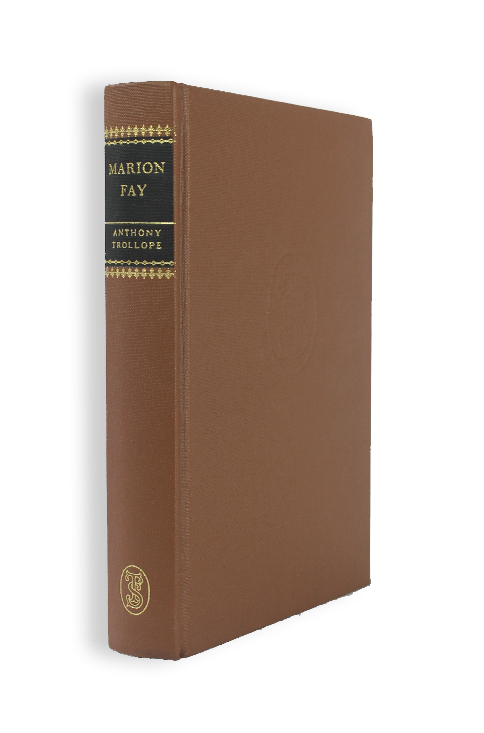Marion Fay
£35.00
Available to members only
Introduction by J Hillis Miller
502 pages
London, Chapman and Hall, 1882. 3v.
Originally published simultaneously in The Graphic, Dec 3, 1881 – June 3, 1882, and in The Illustrated Sydney News.
Out of stock
Marion Fay is about class, rank and the social divisions caused by the meetings of two different, separate worlds. Lord Hampstead, son and heir to the Marquis of Kingsbury, is a rather earnest young Radical, and somewhat ashamed of his title. His closest friend is his contemporary George Roden, who is – in some ways reminiscent of Trollope’s early career – a clerk in the General Post Office in St Martin-le-Grand.
Lord Hampstead’s choice of such a friend infuriates his stepmother, Clara, the snobbish second wife of the Marquess. However, even Lord Hampstead’s liberality is shaken when his own sister, Lady Frances Trafford, falls in love with George. The pair regard themselves as engaged, to the grave disapproval of her family. Lord Hampstead, however, also incurs his family’s wrath.
Upon visiting Mrs Roden in her tiny house in ‘Paradise Row’, he meets and falls in love with a young Quaker girl called Marion Fay, and determines to marry her. Although Marion loves him in return she knows that they cannot marry, since she is consumptive and doomed to die young; indeed she dies before the end of the novel, her decision unchanged, leaving Lord Hampstead desolate, and himself resolved never to marry.
George Roden’s romance with Lady Frances, however, fares much better when his mother reveals that his father was an Italian duke of ancient lineage. Suddenly all obstacles magically melt away, and Lady Frances’ family fall over one another to give their approval to the union.
These two main plots are rather less interesting than that concerning Lord Hampstead’s stepmother, the second Marchioness of Kingsbury, and her intriguing with the Reverend Thomas Greenwood. Trollope describes her thus: ‘She could be very eloquent with silence, and strike an adversary dumb by the way in which she would leave a room’. The Marchioness is a woman eaten up by her ambition for her own three small sons, whom she would prefer to inherit, and by her hatred for her stepson, the actual heir. She is aided by the Reverend Thomas Greenwood, domestic chaplain and private secretary to the Marquis. The pair attempt to deepen the gulf between the Marquis and his son, at one point even hoping for Lord Hampstead’s death.
Greenwood is one of Trollope’s few really wicked clergymen; his characterisation is one of the novel’s subtler pleasures. In creating the two pairs of lovers, one doomed, the other ultimately successful, Trollope seemed to be endorsing the notion of class compatibility. Yet with the Marchioness, and Reverend Greenwood, he appears to contradict that: his message seems to be that rank, or aspiration to rank, can make you mad.
